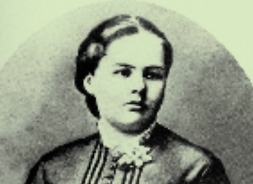Couriosities
Polish Women of all time in Mazovia
Among polish traces of Maria Skłodowskiej-Curie[1] we can find the village of Zwola, located in the southern part of Gniewoszów municipality in Kozienicki county. Until 1885 she often spent there her free time with her siblings. During the rest, they were taking trips to Czarnolas, Sarnów, Regów, Boguszówka and Zwoleń.
In 1871 Zwola properties (the village and the farm) were bought in the public auction by Władysław Boguski, Maria’s uncle. He gained funds for the purchase of this property from her father Władysław Skłodowski, who on the basis of subrogation (cession) paid off part of brother-in-law’s debts. Thanks to this, Mr Skłodowski became co-owner of Zwola, where his doughters and wife spent a lot of time on carefree leisure.
Youngest of the siblings, resolute Maria, when she was 5, went to Zwola for the first time. In her biography, written by her daughter Ewa Curie, we can find story from one of the trips to the village in southern Mazovia: “Maria has great memory and remembers everything: a brook, where she was paddling with her sisters for long hours, muddy „soaps”, which they were doing by secretly splashing mud on each other’s dresses, which later dried in the sun on the board known only to them... As well as the old lime, on which seven or eight of „plotters” (as they called cousins, kids from neighbourhood) climb up, dragging up small Maria, because she had to small shoulders and short legs to climb up by herself. She also remembered cold, crunchy cabbage leafs on this lime tree spread between branches, used to store carrots, gooseberries and cherries”. The direct description of the idyllic time in Zwola, Maria send in the letter to her friend: „In the summer of 1883 I have been in Zwola for couple of days where I have met Mr Kotarbiński, who was so funny and was reciting, singing, gathered gooseberry, made jokes with us. When he was leaving we made him chaplet of willow, camomile and pinks and throw it on his cariole shouting “Viva Mr Kotarbiński!”. He put it on his head and took it to Warsaw. It is very entertaining in Zwola. There are many people in here and you can feel so much freedom, equality and independence which you cannot possibly imagine”.
After graduation exams in 1885, Maria visited Zwola for the last time, when as a governess she took care of uncle Boguski’s children. In one of the last verses of the poem „Anno Domini 1885”Polish women of all time [2] wrote:
„Broken-hearted heir said to Maryla
– This is the end of my estate.
Go to Warsaw,
And learn for the mankind sake”.
If these are true words of heir Boguski, could they be more prophetic?
[1] You should know that to honour the Nobel prize winner, in the centenary of awarding Nobel Prize in chemistry to Maria Skłodowska-Curie, year 2011 in Poland have been announced as the Year of Maria Skłodowska-Curie. It is also the Year of Chemistry in the rest of the world.
[2] Maria Skłodowska-Curie became also the Polish women of all time in the plebiscite of Polish History Museum and History Magazine „Mówią wieki”.
Liczba wyświetleń: 174
news list




